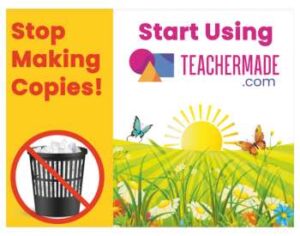This is a guest post from Avra Robinson (@AvraRachel) of EdTechTeacher – an advertiser on this site.
Vocaroo is a simple, free voice recorder that allows users to create an audio recording with just a few clicks. Once recorded, the audio file can remain on the Vocaroo servers and be easily transmitted via a link, or it can be downloaded into several different file types including MP3, Ogg, FLAC, or WAV. Additionally, it can be embedded onto a blog or website or shared via several social media buttons.
Since Vocaroo is web-based, it’s an ideal companion for the Chromebook classroom or any web-based environment. Students and teachers can easily record and share their thoughts with each other. The audio recordings become great opportunities for formative assessment and feedback as well as a neat way to have students double-check their writing for errors.
3 Classroom Applications:
Formative Feedback
Students can record 30-60 seconds of audio feedback about a new concept, and teachers can then collect links to the audio recordings in a Google Form or via a Padlet wall. Within 30 minutes, teachers could have a pulse on how well their students are understanding the ideas shared.
Peer Feedback
As students give peer-to-peer feedback using the comments function in a Google Doc, they can easily insert a Vocaroo link to provide an audio comment. This is especially helpful when they want to share ideas that are too lengthy to type. Teachers can do the same as they provide feedback to students about their work.
Read Aloud to Catch Mistakes
Prior to submitting a draft of an essay, teachers can require students to read the essay aloud in a Vocaroo recording to catch mistakes and hear their essay. While teachers often encourage students to do this on their own, requiring a link to them reading it aloud would ensure that students see the process through. The link to the recording could be shared in a comment within the Google Doc or even added at the top of the essay. This simple task can help augment students’ oral reading fluency and help them catch potential mistakes that they might not have caught by reading their work quietly to themselves.
To learn more about working with Google Apps, Web Tools, and Chromebooks, EdTechTeacher provides FREE resources on their website.











